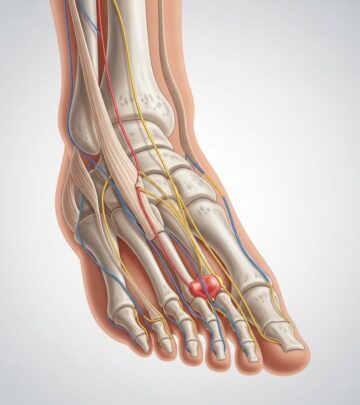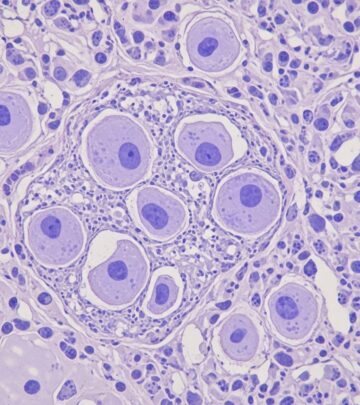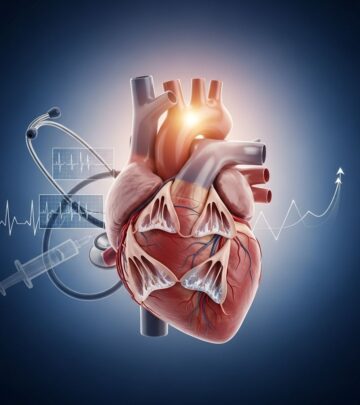Thoracic Aortic Aneurysm: Symptoms, Causes, and When to Seek Care
Learn the symptoms, causes, and urgent warning signs of thoracic aortic aneurysms to promote early detection and emergency preparedness.

The thoracic aortic aneurysm is a serious cardiovascular condition characterized by a bulge or dilation in the upper portion of the aorta, the main blood vessel carrying oxygen-rich blood from the heart to the rest of the body. Often developing silently and gradually, this condition poses significant risks if the aneurysm enlarges, ruptures, or leads to a tear (dissection) in the aortic wall. Awareness of its symptoms, causes, and warning signs can be lifesaving.
What Is a Thoracic Aortic Aneurysm?
The thoracic aorta is the segment of the aorta that runs through the chest. A thoracic aortic aneurysm occurs when a weakened or abnormal area of the aortic wall in this region begins to balloon outward. If undetected or untreated, the aneurysm may continue to grow, increasing the risk of life-threatening complications such as rupture or aortic dissection.
While some aneurysms can remain stable for years, others may progress rapidly. Early diagnosis is critical, but most thoracic aortic aneurysms do not cause symptoms until dangerous complications arise.
Symptoms
Thoracic aortic aneurysms typically grow slowly and may be asymptomatic for a long time, making them difficult to detect without imaging studies performed for unrelated reasons. However, certain signs and symptoms can develop as the aneurysm enlarges:
- Back pain
- Cough
- Weak, scratchy, or hoarse voice
- Shortness of breath
- Tenderness or pain in the chest
These symptoms are often subtle and non-specific, sometimes attributed to other conditions. Many people with thoracic aortic aneurysms remain unaware of their diagnosis until imaging reveals the problem during evaluations for other complaints.
Symptoms of Rupture or Aortic Dissection
The most severe complications of a thoracic aortic aneurysm are rupture and aortic dissection (a dangerous tear in the aorta’s inner layer). Both are medical emergencies and require immediate care. When these occur, symptoms develop suddenly and typically include:
- Sharp, sudden pain in the upper back radiating downward
- Pain in the chest, jaw, neck, or arms
- Trouble breathing
- Low blood pressure
- Loss of consciousness
- Shortness of breath
- Trouble swallowing
It is important to note that some aneurysms may never rupture or dissect and may remain stable; however, the possibility of acute, life-threatening complications necessitates awareness and vigilance.
When to See a Doctor
Most people with thoracic aortic aneurysms do not experience symptoms until a critical event occurs. Therefore, it is vital to recognize that:
- An aortic dissection or an aneurysm rupture constitutes a medical emergency.
- If you or someone near you exhibits sudden severe chest or back pain, trouble breathing, unexplained fainting, or other symptoms suggestive of aortic rupture or dissection, call 911 or emergency services immediately.
People with a known history of genetic conditions affecting blood vessels, or a diagnosed thoracic aneurysm, should maintain regular follow-up with their healthcare provider for assessment and monitoring.
Causes
A thoracic aortic aneurysm develops when the wall of the aorta becomes weakened and loses its normal structural integrity. This weakness allows the vessel wall to bulge outward, forming an aneurysm. Multiple risk factors and underlying medical conditions can contribute to the development of aneurysms. Below are the most common causes:
- Atherosclerosis: The buildup of fats, cholesterol, and other substances on artery walls (atherosclerosis) stiffens and weakens arteries. Older adults with uncontrolled high blood pressure or cholesterol are at greater risk.
- Genetic Conditions: Genetic syndromes such as Marfan syndrome, Loeys-Dietz syndrome, and vascular Ehlers-Danlos syndrome can cause abnormal connective tissue, leading to a significantly increased risk of thoracic aortic aneurysms, aortic dissectons, or ruptures. Aneurysms in young people are often hereditary.
- Blood Vessel Inflammation: Certain inflammatory disorders like Takayasu arteritis and giant cell arteritis are associated with increased vulnerability of the aortic wall.
- Bicuspid Aortic Valve: Individuals born with a bicuspid aortic valve (with only two flaps instead of three) are more likely to develop aneurysms in the thoracic aorta.
- Untreated Infection: Rarely, untreated infections such as syphilis or salmonella can weaken the aortic wall, resulting in aneurysm formation.
- Traumatic Injury: Though uncommon, severe trauma—such as from a high-impact car crash or significant fall—can damage the thoracic aorta and predispose the vessel to aneurysm development.
Aortic Dissection and Aneurysm: The Relationship
An aortic dissection refers to a tear that forms in the inner layer of the aorta. The force of blood entering this tear causes the inner and middle layers to separate (dissect). A pre-existing aneurysm significantly increases the risk of such an event. Both rupture and dissection threaten blood flow to vital organs and are commonly fatal without prompt intervention.
Risk Factors
Factors that may increase the risk of developing a thoracic aortic aneurysm include:
- Age: The risk increases significantly with age, especially over 65.
- Family History: Close relatives with a thoracic aortic aneurysm or genetic conditions raise risk.
- Male Sex: Men are more likely than women to develop these aneurysms, though women are at increased risk of complications due to later diagnosis.
- High Blood Pressure (Hypertension): This accelerates arterial wall weakening.
- High Cholesterol and Atherosclerosis: Contribute to arterial damage and aneurysm formation.
- Connective Tissue Disorders: As noted above, inherited disorders can markly increase risk.
- Smoking: Damages blood vessels and contributes significantly to the risk.
- Inflammatory or Infectious Conditions: Can damage vessel walls, albeit rarely.
Complications
The primary dangers of a thoracic aortic aneurysm include:
- Aortic Rupture: When an aneurysm bursts, it leads to massive internal bleeding, very low blood pressure, loss of consciousness, and is often fatal.
- Aortic Dissection: A tear within the aortic wall can quickly compromise circulation to major organs and is rapidly life-threatening.
- Blood Clot (Thrombus): Blood can pool inside the aneurysm and form clots, which may travel to block other blood vessels, resulting in stroke, organ damage, or tissue death.
Prevention
While not all thoracic aortic aneurysms are preventable—particularly those due to genetic causes—certain measures can help reduce risk:
- Manage blood pressure and cholesterol through lifestyle and medications as prescribed.
- Stop smoking and avoid all tobacco products.
- Regular physical activity adapted to one’s health status.
- Healthy diet rich in fruits, vegetables, whole grains, and lean proteins, with minimal processed foods.
- Routine screening if you have a family history of thoracic aortic aneurysm or specific genetic syndromes.
Table: Common Causes of Thoracic Aortic Aneurysm
| Cause | Description |
|---|---|
| Atherosclerosis | Buildup of plaque in arteries weakens vessel wall |
| Genetic syndromes | Marfan, Loeys-Dietz, and vascular Ehlers-Danlos syndromes compromise connective tissue |
| Blood vessel inflammation | Vasculitis conditions like Takayasu and giant cell arteritis lead to vessel damage |
| Bicuspid aortic valve | Congenital valve abnormality increases aneurysm risk |
| Infection | Rare, but untreated infections can damage the aorta |
| Trauma | Major chest injuries may cause aneurysm formation |
Frequently Asked Questions (FAQs)
Q: Can thoracic aortic aneurysms be detected early?
A: Most thoracic aortic aneurysms develop silently without symptoms, making early detection difficult. Routine imaging, such as an echocardiogram, CT, or MRI, may identify aneurysms in people with risk factors, a family history, or during evaluations for other health problems.
Q: How fast can a thoracic aortic aneurysm grow?
A: Growth rates vary significantly; some aneurysms remain stable for years, while others may enlarge more quickly, especially in the presence of uncontrolled high blood pressure, genetic conditions, or ongoing vessel inflammation. Regular follow-up imaging helps determine the growth pattern for each individual.
Q: What conditions increase the risk of life-threatening complications?
A: Large aneurysms, those associated with genetic connective tissue disorders, and rapidly enlarging aneurysms are at greatest risk for rupture or dissection. Poorly controlled blood pressure, smoking, and advanced age also increase these risks.
Q: What should I do if I have a family history of thoracic aortic aneurysm?
A: Discuss your family history with your physician. They may recommend periodic screening exams, genetic counseling, and regular cardiovascular evaluations, especially if you have a related genetic syndrome.
Q: When is emergency care needed for thoracic aortic aneurysm?
A: Seek immediate emergency care if you or someone else develops sudden, severe chest or back pain, fainting, difficulty breathing, symptoms of shock, or sudden stroke-like symptoms. Prompt medical intervention is critical for survival if a rupture or dissection occurs.
References
- Mayo Clinic. “Thoracic Aortic Aneurysm: Symptoms and Causes.” (Sourced for description, symptoms, causes, and emergency signs.)
- Mayo Clinic. “Aortic Aneurysm: Symptoms and Causes.” (Background context and additional risk factors.)
References
- https://www.mayoclinic.org/diseases-conditions/thoracic-aortic-aneurysm/symptoms-causes/syc-20350188
- https://www.mayoclinic.org/diseases-conditions/aortic-aneurysm/symptoms-causes/syc-20369472
- https://www.mayoclinic.org/diseases-conditions/thoracic-aortic-aneurysm/diagnosis-treatment/drc-20350193
- https://www.mayoclinic.org/diseases-conditions/aneurysms/symptoms-causes/syc-20354633
- https://www.youtube.com/watch?v=V_TDXV6MaZo
- https://www.mayoclinic.org/diseases-conditions/abdominal-aortic-aneurysm/symptoms-causes/syc-20350688
- https://www.youtube.com/watch?v=L_N4HFGkgZ4
- https://newsnetwork.mayoclinic.org/discussion/mayo-clinic-q-and-a-thoracic-aortic-aneurysms/
- https://www.mayoclinic.org/diseases-conditions/thoracic-aortic-aneurysm/care-at-mayo-clinic/mac-20350197
Read full bio of Sneha Tete












